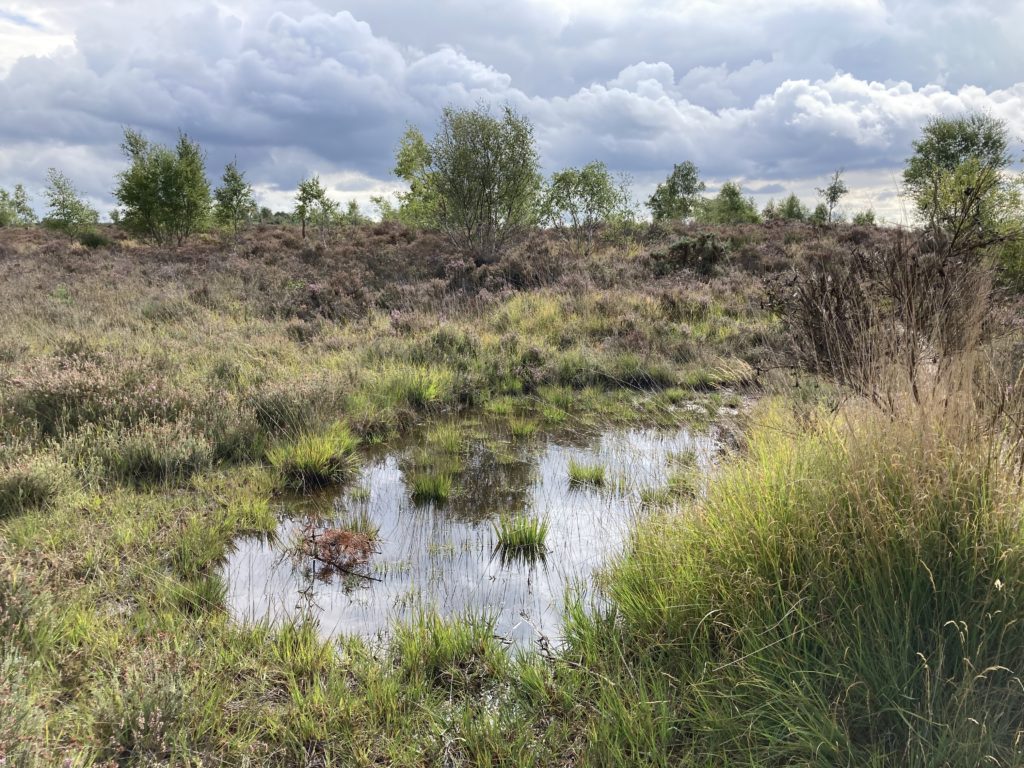Marsh Clubmoss

Ever heard of Marsh Clubmoss? No? Many people haven’t, let alone seen it! Here’s why.
Marsh Clubmoss (Lycopodiella inundata) is a sneaky plant for two reasons. Firstly because it’s actually a type of fern, not a moss, and secondly because it’s extremely difficult to locate!
A lover of wet areas of heath, particularly with disturbed, bare ground, it has the ability to blend in amongst sphagnum mosses and heather. As reflected by its endangered status (under Schedule 8 of the Wildlife and Countryside Act 1981), it isn’t a common plant on lowland heath. But the good news is that it’s protected, and organisations such as the Species Recovery Trust are keeping a close eye on it across the UK. It’s currently found at just under 70 heathland locations.
With strongholds in the New Forest and Dorset, we’re extremely fortunate that it’s found on a small number of our Thames Basin Heaths.

Marsh Clubmoss habitat
I’ve helped with the surveying of this rare plant for a number of years at Chobham Common. Each individual plant can split off with multiple trailing stems, making it tricky to count. So surveying in late summer, when growth has ceased, is the optimal time.
To find out more about this curious plant, visit:
https://www.speciesrecoverytrust.org.uk/marsh-clubmoss
Warden Nicky
Thames Basin Heaths Partnership
#MoreThanJustNightjars
